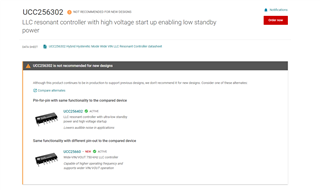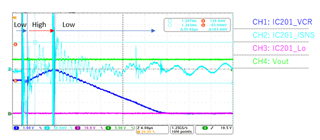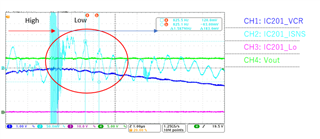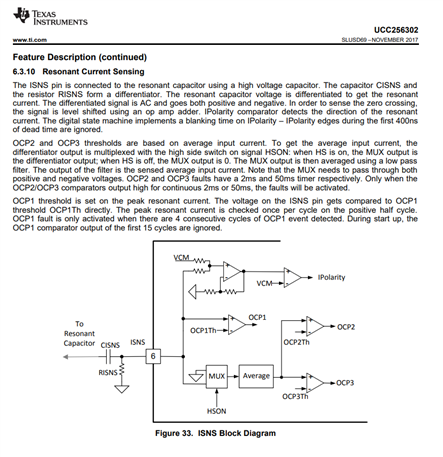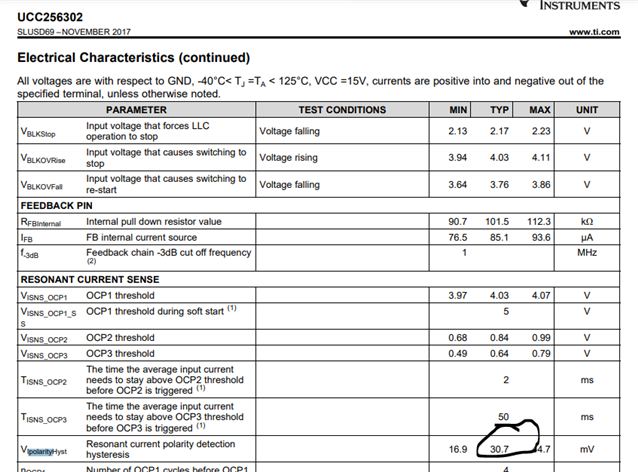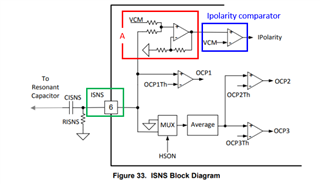Hi Team,
I have inquired about this in the past, but I would like to confirm it again.
There is a description on the data sheet, "If there is no slew detected, IPolarity signal is used. The next gate will be turned on at the next IPolarity flip event."
What is the threshold for detecting IPolarity flip events?
Please see waveform below;
-CH2 LowSideINV_Vds
-CH3 LowSideINV_Vgs
-CH4 ISNS Pin
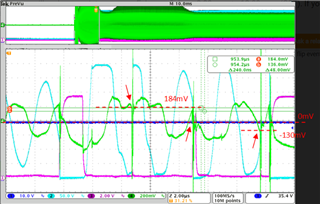
According to the data sheet and previous answers, the threshold value is 44.7/2mVmax above and below the 0V standard, but what could be the reason why it is actually detected (ON) at 180mV?
Please tell me the factors that are detected with a threshold higher than hysteresis.
Please respond ASAP.
Best regards.



